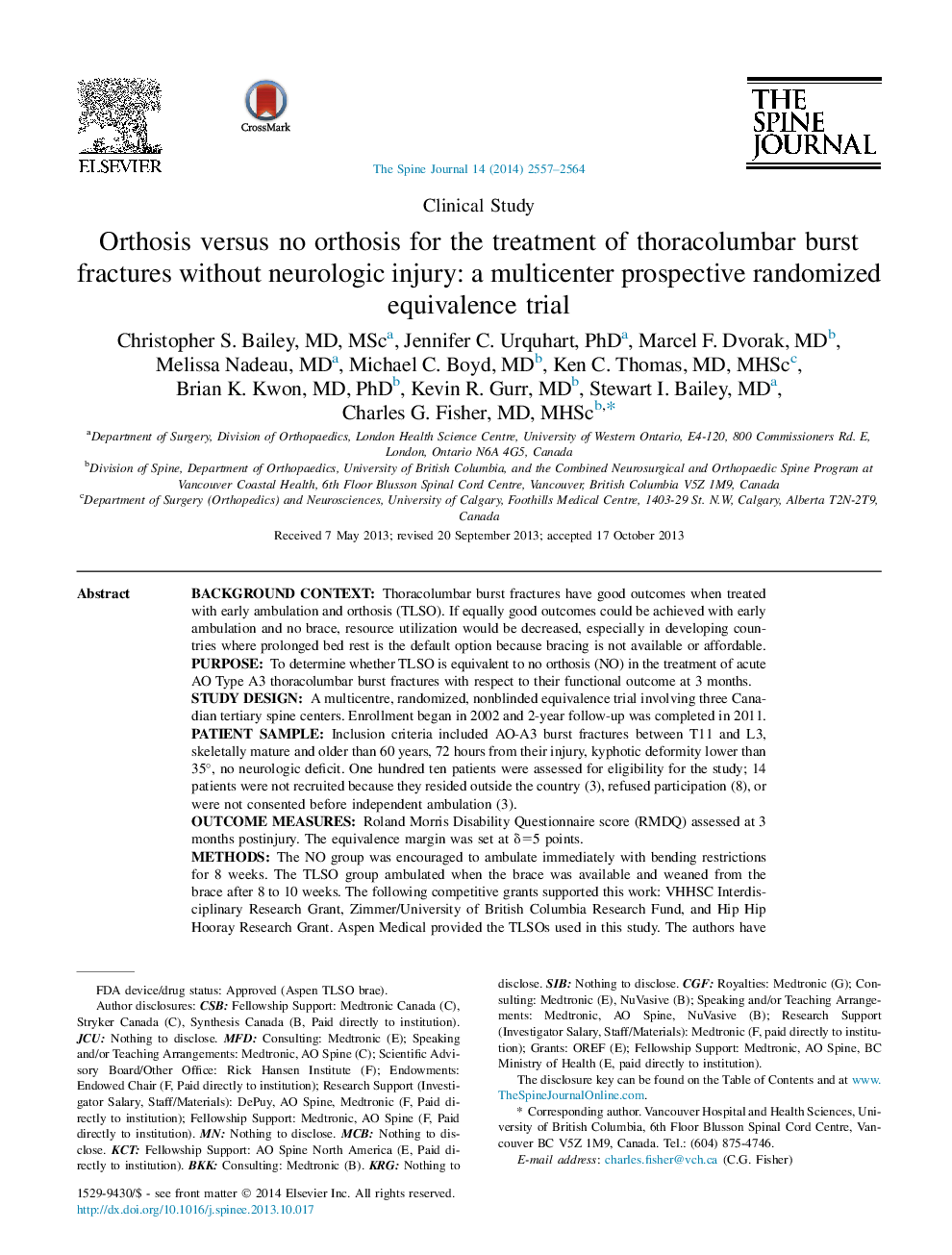| کد مقاله | کد نشریه | سال انتشار | مقاله انگلیسی | نسخه تمام متن |
|---|---|---|---|---|
| 6212704 | 1268588 | 2014 | 8 صفحه PDF | دانلود رایگان |
Background contextThoracolumbar burst fractures have good outcomes when treated with early ambulation and orthosis (TLSO). If equally good outcomes could be achieved with early ambulation and no brace, resource utilization would be decreased, especially in developing countries where prolonged bed rest is the default option because bracing is not available or affordable.PurposeTo determine whether TLSO is equivalent to no orthosis (NO) in the treatment of acute AO Type A3 thoracolumbar burst fractures with respect to their functional outcome at 3 months.Study designA multicentre, randomized, nonblinded equivalence trial involving three Canadian tertiary spine centers. Enrollment began in 2002 and 2-year follow-up was completed in 2011.Patient sampleInclusion criteria included AO-A3 burst fractures between T11 and L3, skeletally mature and older than 60 years, 72 hours from their injury, kyphotic deformity lower than 35°, no neurologic deficit. One hundred ten patients were assessed for eligibility for the study; 14 patients were not recruited because they resided outside the country (3), refused participation (8), or were not consented before independent ambulation (3).Outcome measuresRoland Morris Disability Questionnaire score (RMDQ) assessed at 3 months postinjury. The equivalence margin was set at δ=5 points.MethodsThe NO group was encouraged to ambulate immediately with bending restrictions for 8 weeks. The TLSO group ambulated when the brace was available and weaned from the brace after 8 to 10 weeks. The following competitive grants supported this work: VHHSC Interdisciplinary Research Grant, Zimmer/University of British Columbia Research Fund, and Hip Hip Hooray Research Grant. Aspen Medical provided the TLSOs used in this study. The authors have no financial or personal relationships that could inappropriately influence this work.ResultsForty-seven patients were enrolled into the TLSO group and 49 patients into the NO group. Forty-six participants per group were available for the primary outcome. The RMDQ score at 3 months postinjury was 6.8±5.4 (standard deviation [SD]) for the TLSO group and 7.7±6.0 (SD) in the NO group. The 95% confidence interval (â1.5 to 3.2) was within the predetermined margin of equivalence. Six patients required surgical stabilization, five of them before initial discharge.ConclusionsTreating these fractures using early ambulation without a brace avoids the cost and patient deconditioning associated with a brace and complications and costs associated with long-term bed rest if a TLSO or body cast is not available.
Journal: The Spine Journal - Volume 14, Issue 11, 1 November 2014, Pages 2557-2564
